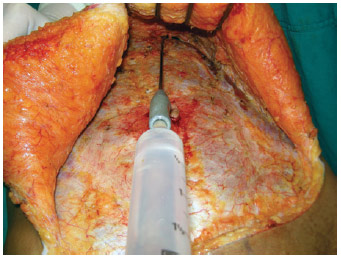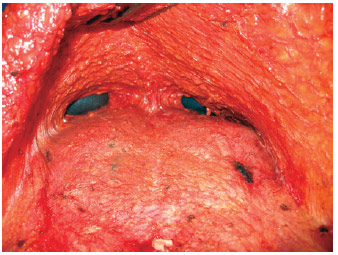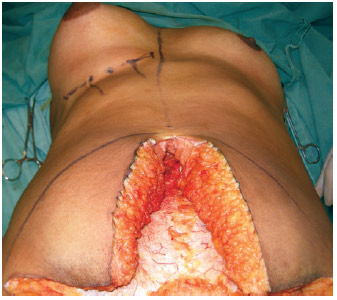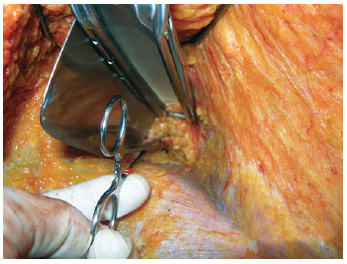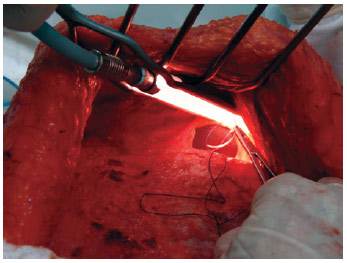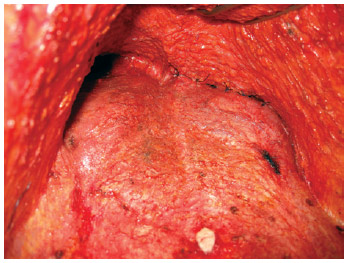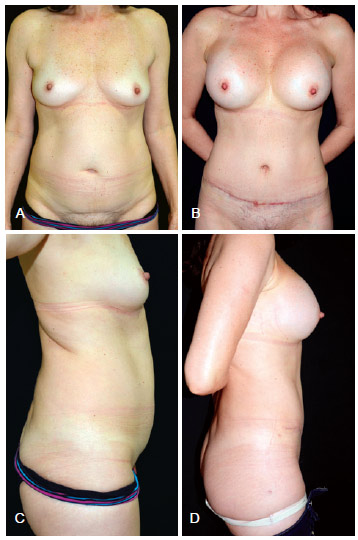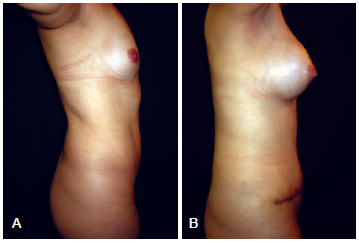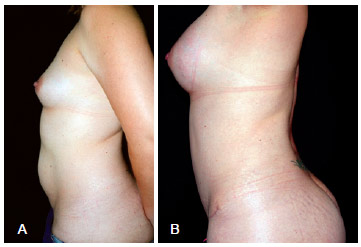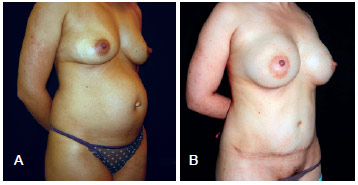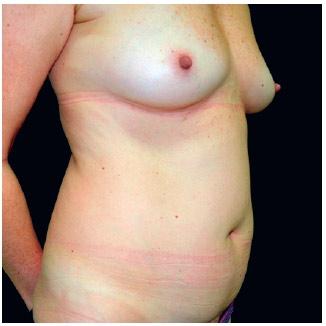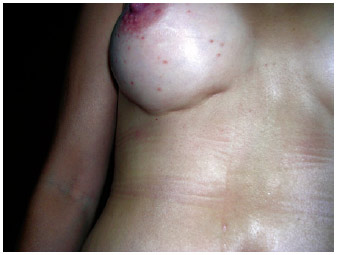ABSTRACT
INTRODUCTION: Pregnancy and obesity cause distension of the abdominal wall and produce changes in the shape and size of the breasts. Thus, the need of aesthetic improvement of the abdominal area is not uncommon, coinciding with the desire for breast augmentation. Performing mammoplasty via the abdominoplasty incision approach was first described in 1976. Because of the lack of prospective studies using this approach, we performed a series of dermolipectomy procedures using the abdominal incision to insert a pair of silicone gel breast implants.
METHODS: In total, 100 consecutive patients were selected, with a mean age of 33 ± 2 years. Classic abdominoplasty was performed, and 2 tunnels were then made in the right and left hypochondria. After implant placement, the mammary fold was reconstructed using simple sutures with absorbable threads to attach the subcutaneous tissue to the aponeurosis.
RESULTS: None of the following complications were observed: deep-vein thrombosis, cardiorespiratory or anesthetic complications, skin necrosis, visible bleeding, hematoma, or clinically detectable infection. The volume of the implants ranged from 280 to 450 mL (median, 350 mL). The mean operation time was 116 minutes. Reoperation was not necessary in any of the cases. The monitoring period ranged from 9 to 84 months (mean, 36 months).
CONCLUSIONS: Breast augmentation via the abdominoplasty incision approach was demonstrated to be a reliable and simple technique, providing a new, scar-free alternative to mammary surgical procedures.
Keywords: Plastic surgery. Mammaplasty. Breast implantation. Breast/surgery. Abdomen/surgery. Abdominoplasty. Lipectomy.


